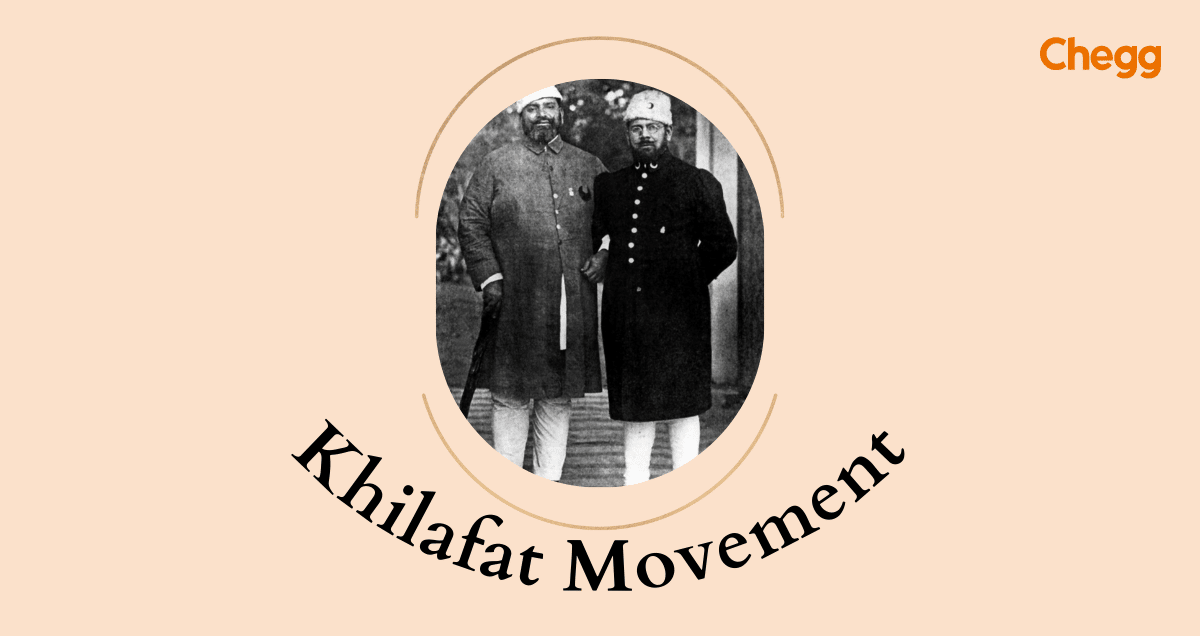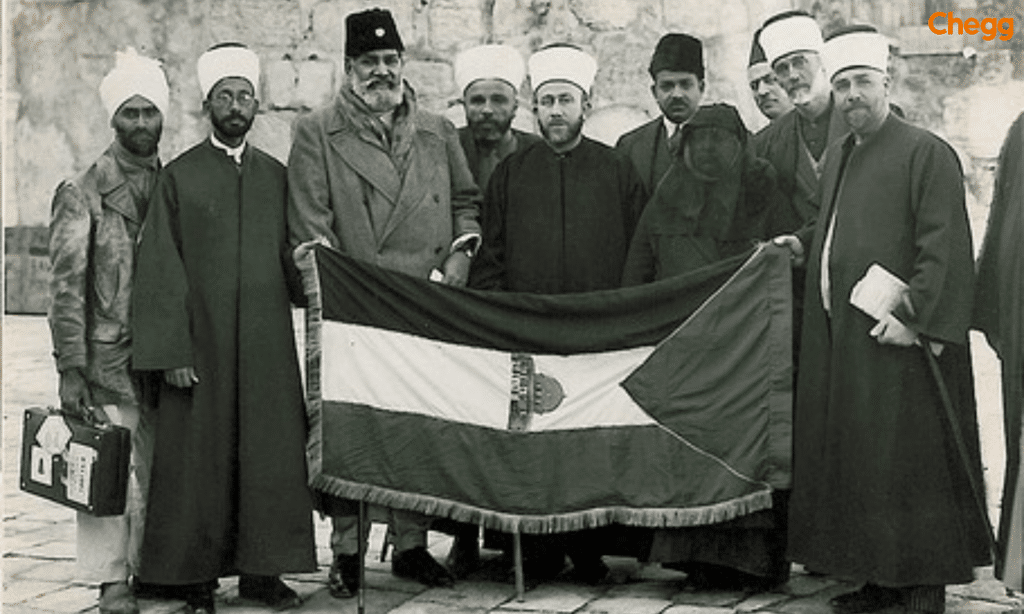
Quick Summary
Table of Contents
The Khilafat Movement was a historic moment in India’s fight for independence. Muslims felt the urgency everywhere because of the imminent danger to the Ottoman caliphate’s power.
The importance of the movement to India’s fight for independence is immense. As such, it was a powerful example of the connection between political and religious ideals. The Movement highlighted the shared problems of Muslims beyond geographical boundaries. It had ties to global Islamic awareness.
The Khilafat Movement was a political campaign by Indian Muslims in British India from 1919 to 1922. It was launched to protest British policies towards Turkey and the dismantling of the Ottoman Empire following World War I. The movement aimed to address Turkey’s grievances and foster Hindu-Muslim unity. It ended in 1922, coinciding with the conclusion of the Non-cooperation Movement.
The Khilafat Movement, spanning from 1919 to 1924, encompasses several significant dates that shaped its trajectory and impact on India’s socio-political landscape.
| Year | Movement progression |
| 1919: The Emergence of the Movement | The Khilafat Movement began to take shape in 1919 following World War I and the signing of the Treaty of Versailles, which posed a threat to the Ottoman Caliphate. |
| August 23, 1920: Formal Establishment | August 23, 1920, marks the official establishment and widely recognized starting point of the Khilafat Movement. On this date, the movement gained prominence and momentum as Indian Muslims rallied behind the cause of preserving the caliphate. |
| 1920-1922: Period of Intensified Protest | During these years, the Khilafat Movement witnessed intensified protests, strikes, and demonstrations across India, reflecting the widespread support and unity among Indian Muslims. The Khilafat Movement merged with Mahatma Gandhi’s Non-Cooperation Movement in 1920-1922, amplifying its reach and impact. The alignment with the broader Indian nationalist cause led to mass mobilization and civil disobedience against British colonial rule. |
| 1922: Chauri Chaura Incident | The Chauri Chaura incident in 1922, where protesters turned violent and attacked a police station, led Gandhi to call off the Non-Cooperation Movement. This event also marked a turning point for the Khilafat Movement, as its momentum waned. |
| 1924: Dissolution of the Movement | By 1924, the Khilafat Movement had largely dissolved, following the restoration of order by British authorities and internal divisions within the movement. |
The Khilafat Movement emerged against the backdrop of several significant events, including the socio-economic repercussions of World War I, the oppressive Rowlatt Act, the tragic Jallianwala Bagh Massacre, and the Montagu-Chelmsford Reforms.

The Khilafat Movement (1919-1924) was initiated by Muhammad Ali and Shaukat Ali to unite the Muslim community in British India and protect the Ottoman Empire after World War I. The movement aimed to restore the Ottoman Caliphate and achieve Islamic unification. In September 1920, at the Calcutta Session of the Congress, Mahatma Gandhi convinced other leaders to support the Khilafat cause by launching the Non-Cooperation Movement.
The movement gained widespread support across India, transcending cultural boundaries. As news of the collapse of the Ottoman Empire and the threat to the Caliphate spread, the movement grew stronger through newspapers, rallies, and speeches. The alliance with the Indian National Congress and leaders like Gandhi helped amplify the movement’s impact..
The Khilafat Movement, led by prominent freedom fighters Maulana Mohammad Ali and Maulana Shaukat Ali, was a significant political campaign in 1919 aimed at protecting the Ottoman Caliphate after World War I. The movement sought to defend the Caliphate, a symbol of Islamic unity, from British dismantling. The Ali Brothers rallied Muslims across India, urging them to unite against British imperialism. Their efforts not only focused on protecting the Caliphate but also contributed to the broader Indian independence struggle, aligning with Mahatma Gandhi’s Non-Cooperation Movement and fostering Hindu-Muslim unity.

Maulana Mohammad Ali and Maulana Shaukat Ali played a crucial role in energizing the Khilafat Movement, using their writings and speeches to inspire unity and a sense of common purpose among India’s diverse communities.
Their call for Islamic solidarity and national unity linked the Khilafat cause with India’s broader struggle for independence.
Maulana Abul Kalam Azad was instrumental in mobilizing Muslim youth, channelling their energy into the movement with his sharp intellect and powerful oratory.
Azad’s leadership brought a new vitality to the movement, inspiring a wave of young activists committed to the cause.
| Name | Role & Contribution |
|---|---|
| Mohammed Ali & Shaukat Ali (The Ali Brothers) | Inspired and led the movement through powerful speeches and rallies, traveling across India to unite Muslims in resistance. |
| Maulana Abul Kalam Azad | A scholar and orator, he inspired educated Muslims by highlighting the religious importance of the Khilafat cause. |
| Maulana Hasrat Mohani | Advocated for non-violence and unity, promoting harmony across different communities in India. |
| Begum Shaista Ikramullah (wife of Maulana Shaukat Ali) | Empowered Muslim women, encouraging their active participation in the protests for religious rights. |
| Noor Jehan | Influential singer and actress from Lahore; raised awareness by creating patriotic songs that fueled pro-Khilafat and anti-British sentiments. |
| Ashraf Jahan | Inspired and led the movement through powerful speeches and rallies, travelling across India to unite Muslims in resistance. |
| Abdul Bari | Scholar and educationist from Bihar who mobilized Muslim students and teachers, organizing demonstrations and meetings. |
| Zahoor Ahmad | Led the 1921 Khilafat delegation to London, advocating for Khilafat and the rights of Indian Muslims with British officials. |
The Khilafat Movement arose from a mix of various interconnected circumstances. It shaped India’s independence war and advocated for Islamic unity.
Also Read:-
What is the Chipko Movement in India?
The Narmada Bachao Movement: An Overview
The Khilafat Movement brought Hindus and Muslims closer, which wasn’t common before. Hindus supported Muslims during this time, making things less tense between the two groups, at least temporarily.
Despite its initial momentum, the Khilafat Movement faced several challenges that contributed to its eventual failure. Here are some of the issues that played a part:
The Khilafat Movement sparked a wave of activism across Indian society. Here’s a breakdown of how different groups participated:
The years 1919-1922 witnessed a surge of Indian nationalism with two intertwined movements: the Khilafat Movement and the Non-Cooperation Movement. Though with distinct goals, they employed a unified strategy of non-violence and non-cooperation, cleverly forging a broad alliance.
Driven by a desire to preserve the Ottoman Caliphate, a symbol of Muslim unity, the Khilafat Movement arose as a response to British policies perceived as detrimental to the Ottoman Empire. Muslim leader Maulana Mehmud Hasan even envisioned a national uprising with Ottoman support. Initially bolstered by Gandhi’s Non-Cooperation Movement, the Khilafat Movement ultimately faltered with the abolition of the Caliphate.
Mahatma Gandhi, in 1920, launched the Non-Cooperation Movement, a non-violent campaign urging Indians to reject cooperation with British institutions. This nationwide movement aimed at complete independence (“Swaraj”) and achieving political and religious freedoms. Gandhi strategically used the Khilafat issue as a bridge, uniting Hindus and Muslims in their common fight against British colonialism. Notably, in Bihar, the movement intertwined with local struggles for grazing rights on government land and peasant rights, highlighting its ability to address local grievances alongside the national cause.
The memorable Khilafat Movement is a remarkable depiction of unity and cooperation. Beyond India’s borders, the cry for freedom echoed, reawakening Muslims’ sense of belonging. Despite the drive’s failure to reinstate the Ottoman caliphate, its influence on current initiatives to foster brotherhood and cooperation cannot be denied. Its historical significance shows the value of collaboration in achieving goals and the enduring nature of fundamental values like faith and harmony.
The Khilafat Movement brought together diverse communities under a common cause. It aligned the interests of Indian Muslims with the larger freedom struggle. This interfaith solidarity provided a foundation for the non-cooperation movement led by Gandhi. Though the campaign did not achieve its aim of protecting the Ottoman caliphate, it highlighted the collective power of unified action.
Several leaders came together and joined the Khilafat movement in India. Some of the prominent leaders are Mahatma Gandhi, Maulana Shaukat Ali, and Maulana Mohammad Ali. All of the great leaders fought with everything they had and helped to demolish British rule.
Indian Muslims in British India started the Khilafat movement (1919–1922) as a political protest against British policy towards Turkey and the anticipated dissolution of the Ottoman Empire by the Allies following World War I.
In addition to advocating for a broader non-cooperation campaign, Mahatma Gandhi supported the movement as part of his resistance to the British Empire. The initiative received backing from prominent Hindu and Congress leaders, including Vallabhbhai Patel and Bal Gangadhar Tilak.
Under Maulana Mohammad Ali and Shaukat Ali, the movement had its start in Gujarat. They organized public gatherings to raise awareness of the dangers facing Khilafat. Their lectures incited resentment against the British and catered to the religious feelings of Muslims.
The Khilafat Movement slowed down due to the abolition of the Caliphate in 1924, Gandhi’s withdrawal of support in 1922, and internal divisions among leaders.
The movement primarily targeted the British, advocating for the reversal of the Bengal partition. Led by Muhammad Ali and Shaukat Ali, its main goal was for the Turkish Sultan or Khalifa to retain authority over China and India.

Authored by, Amay Mathur | Senior Editor




Amay Mathur is a business news reporter at Chegg.com. He previously worked for PCMag, Business Insider, The Messenger, and ZDNET as a reporter and copyeditor. His areas of coverage encompass tech, business, strategy, finance, and even space. He is a Columbia University graduate.
Editor's Recommendations
Chegg India does not ask for money to offer any opportunity with the company. We request you to be vigilant before sharing your personal and financial information with any third party. Beware of fraudulent activities claiming affiliation with our company and promising monetary rewards or benefits. Chegg India shall not be responsible for any losses resulting from such activities.
Chegg India does not ask for money to offer any opportunity with the company. We request you to be vigilant before sharing your personal and financial information with any third party. Beware of fraudulent activities claiming affiliation with our company and promising monetary rewards or benefits. Chegg India shall not be responsible for any losses resulting from such activities.